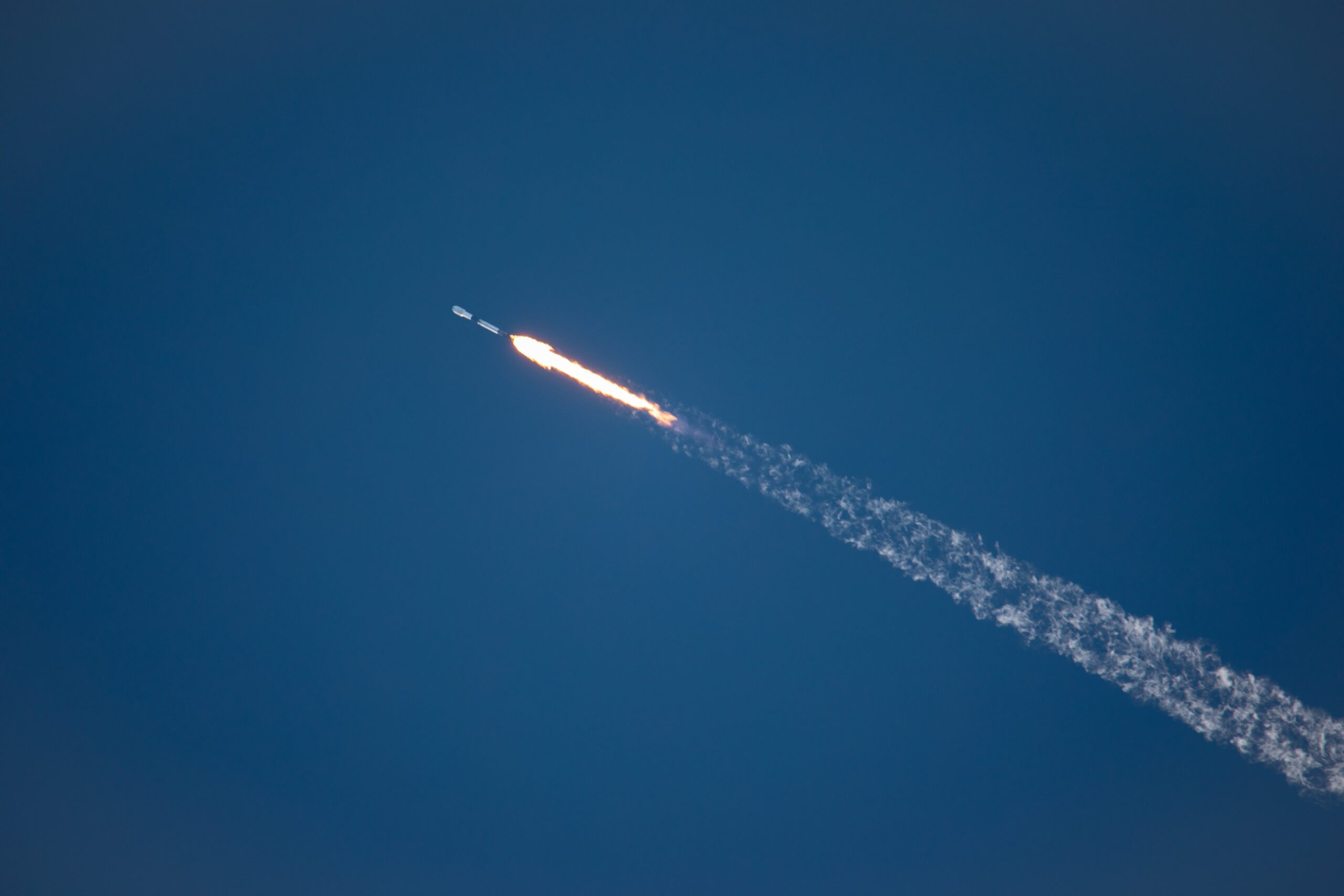Latest News
Arctic Mission Expands Connectivity and International Collaboration in Strategic Region

SpaceX launches the ASBM mission on August 11, 2024. Photo: SpaceX
The Arctic Satellite Broadband Mission (ASBM) launched on Aug. 11 will expand connectivity and boost international collaboration in the increasingly strategic Arctic region.
The two satellites built by Northrop Grumman and launched by SpaceX, are the result of a unique partnership both domestic and international, and commercial and government in nature. ASBM is led by Space Norway subsidiary Heosat, and the U.S. Space Force, and satellite operator Viasat also have payloads onboard the mission. It is the first time an operational U.S. military payload has been hosted on an international commercial space mission.
SpaceX launched the two satellites on a Falcon 9 rocket from Vandenberg Space Force Base, California, late on Sunday, Aug. 11. The mission was previously set for mid-July but delayed due to the Falcon 9 failure and brief grounding.
Northrop Grumman confirmed post-launch that the mission was successful. The satellites, based on the GEOStar platform, will operate in Highly Elliptical Orbit (HEO) over the Arctic and provide continuous broadband coverage north of the 65 degrees North latitude.
The U.S. military payloads onboard are the Enhanced Polar Systems-Recapitalization (EPS-R) payloads, built by Northrop Grumman. It is an extremely high frequency milsatcom system with a mission to provide protected satellite communications for U.S. polar forces operating in the Arctic region.
The Arctic is an increasingly strategic region for the U.S. and is home to significant defense infrastructure. The recently released U.S. Department of Defense 2024 Arctic Strategy identifies some of the geopolitical shifts underway in the region, including Russia’s invasion of Ukraine and Russia’s increased collaboration with China, along with the impact of climate change felt in the Arctic.
The EPS-R payloads improve polar satcom capabilities with significant cost savings, commented Michael Walsh Jr., U.S. Space Force Branch Chief for EPS-R, in a video about the mission.
“The evolving operational environment drove an increased capability needed in the Arctic region. Now that the Arctic is more accessible, maintaining peace in the Arctic region is of the utmost importance,” Walsh said. “The partnership with space Norway was explored because it addresses integrated deterrence and building relationships with our international partners and allies. With the growing strategic need for the north polar region, we provide a more resilient capability.”
The Space Force will handle operation of its payload. Northrop Grumman also built the Control and Planning Segment (CAPS) ground system for the Space Force payload.
Troy Brashear, vice president of Satellite Missions at Northrop Grumman, told Via Satellite the EPS-R payload has a complete barrier where no data from the payload is shared with the rest of the satellite, it is downlinked directly to the U.S. Space Force. This setup provides “the confidence that that secured U.S. data is not going anywhere that it shouldn’t go,” he said.
Brashear said this collaboration required important buy-in from senior leaders in both the U.S. and Norway to allow a classified U.S. military payload on a foreign commercial satellite. “When we write the history of this we need to give a lot of credit to some very senior leadership in the United States that took a risk to do this,” he said.
Brashear previously spent 13 months in northern Greenland inside the Arctic Circle while serving in the U.S. Air Force, and has a personal understanding of the challenges of operating in that environment.
“I know how grueling and hard of an environment it is,” he says. “It’s a really hard environment to get supplies and communication. To get anything up there and to operate there is extremely dangerous. The fact that we can bring communications to U.S. military forces and to our allies and partners in that area really makes you feel good.”
He believes there are likely to be more of these joint commercial/military, domestic/international missions in the future because of the benefits in cost-sharing, but also in terms of strategic risk reduction.
“Now we have in the polar region, U.S. military communications riding on a foreign commercial satellite, we’ve made the decision calculus for the enemy just a little bit harder,” Brashear says of the impact on adversaries.
Space Norway is already exploring the possibility for more Arctic projects with allies.
For Norway, the satellites carry an X-Band payload for the Norwegian Armed Forces and a Norwegian Radiation Monitor payload that will measure radiation levels. This information will be used by the European Commission in their work with the new Galileo communication satellites.
As the commercial partner on the mission, Viasat will see its network expand to the Arctic region with the GX10A and GX10B Ka-band payloads onboard. The payloads are due to enter service in early to mid calendar year 2025.
Viasat reported increased demand for connectivity in the Arctic from governments, commercial mobility customers, and scientists.
“With the successful launch of the ASBM satellites we are a major step closer to providing broadband to civilian, government and military users in the Arctic — which is the primary reason for this mission,” Space Norway Program Director, Kjell-Ove Skare commented. “This common goal has been the driving factor for Viasat, as well as for all parties involved in the ASBM program. It has truly been an excellent collaborative effort.”
Stay connected and get ahead with the leading source of industry intel!
Subscribe Now